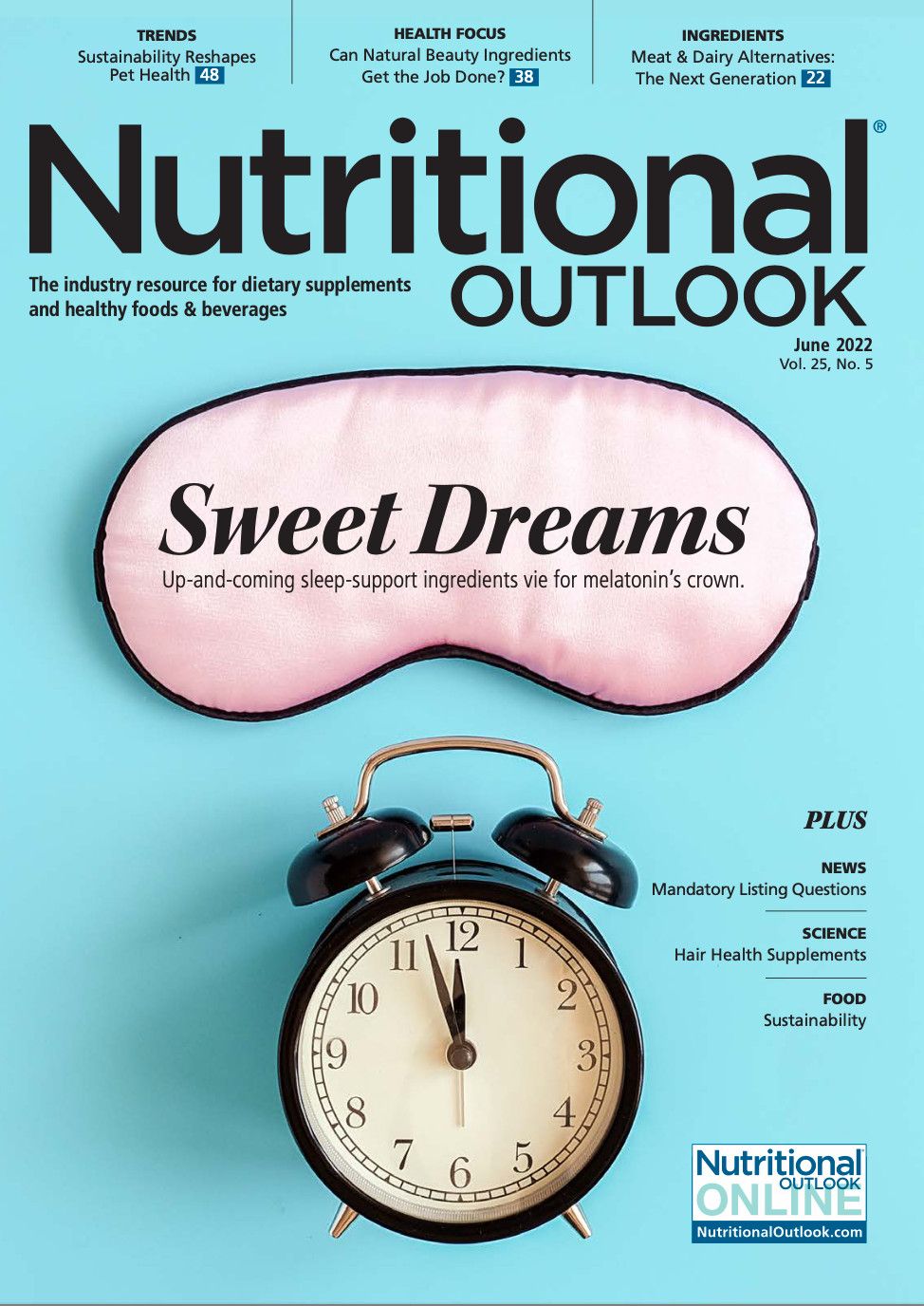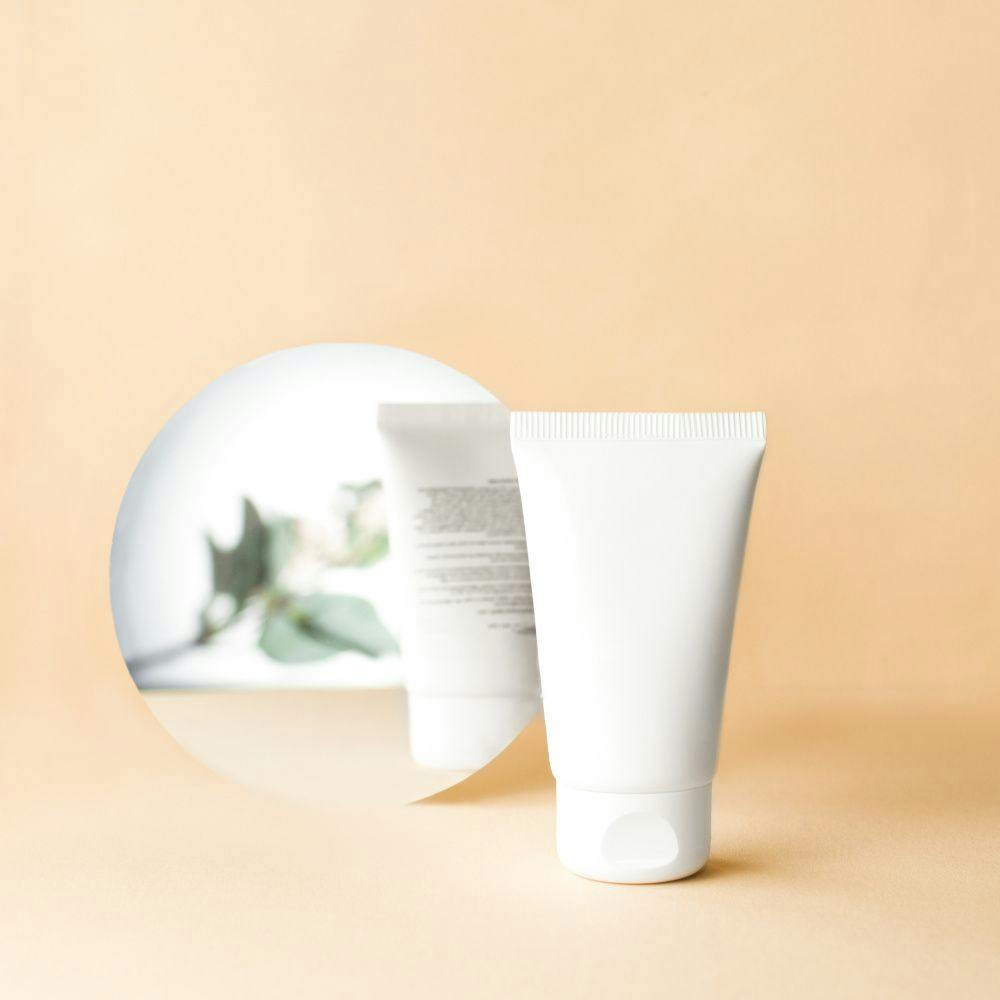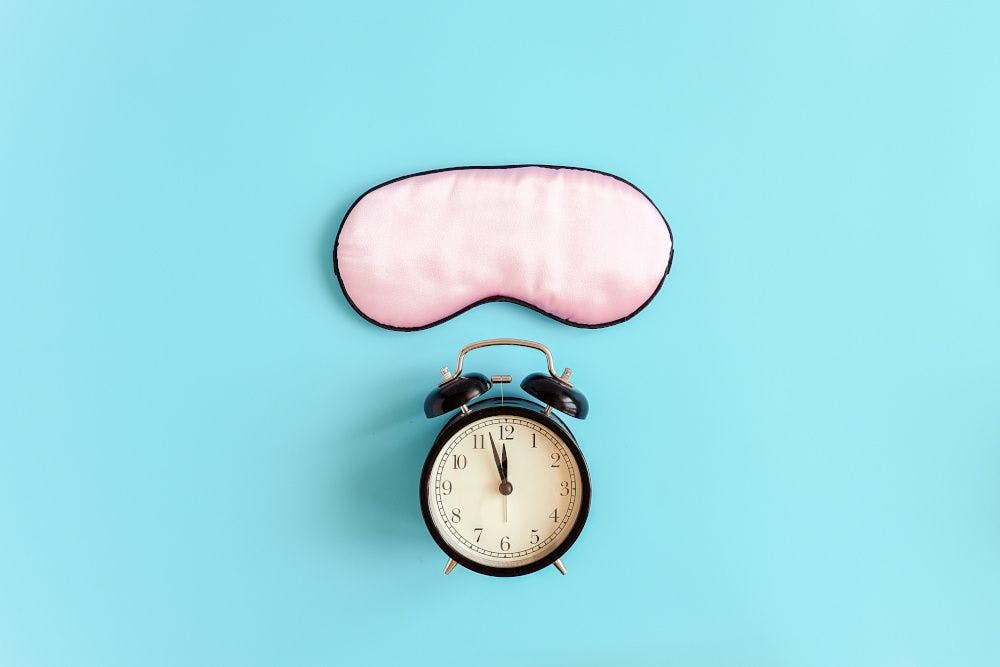Are consumers ready for sleep-support foods and beverages?
And how can companies introduce sleep foods and beverages to bedtime routines?
It’s no surprise that the market for sleep-support supplements really…er, woke up once COVID-19 made a peaceful night’s rest about as hard to come by as a roll of toilet paper. And two-plus years on, research from ClearCut Analytics reveals continued growth in online sleep-supplement sales, with Amazon purchases alone up 55% year-on-year as of September 2021.
But has the need for a bedtime boost redounded to the benefit of sleep-support foods and beverages, too? After all, says Ranjana Sundaresan, lead research analyst, Spoonshot AI (St. Paul, MN), “Consumers show growing interest in the concept of food as medicine, preferring food instead of pills as a means to better health—which increasingly means better-quality sleep.”
In fact, Spoonshot’s analysis of online consumer- and influencer-generated content suggests that general interest in sleep-improving foods grew 90% in the 12 months preceding January 2022. And as for industry interest, references in professional blogs and business media skyrocketed by 228% during the same period.
That said, Sundaresan continues, “Sleep support is still a very niche segment of the food and drink space, accounting for just 0.05% of products launched,” per Spoonshot’s number-crunching. But where some brands see niche positioning, others see room for growth. And if the products they create hit the sleep-support sweet spots, consumers will eat them up.
A Great Time for Sleep
Whatever the platform for sleep support, “It’s definitely a great time to be in this market,” declares David Foreman, RPh, ND, founder and president, Herbal Pharmacist (Oceanside, CA). Even as COVID-19 recedes, he says, “I think people are reaching more for sleep support these days than less.” Why? “The pandemic’s stress is still very fresh—and raw—and it’s still impacting sleep quality.”
Even more vexing, that stress landed atop a stack of woes that were already robbing consumers of rightful rest. As Chris Peruzzi, cofounder and COO, The Functional Chocolate Company (Evergreen, CO), points out, “Sleep issues had been a challenge for a majority of Americans even prior to the pandemic. Stress and anxiety from work, family and finances, as well as health issues and poor sleep habits all lead to insufficient sleep. Unfortunately, those factors aren’t disappearing anytime soon.”
Easing into Sleep
Nor, however, is the sleep-science research that’s demonstrating beyond doubt that “sleep is as important to health as anything else,” Peruzzi continues. “It’s no surprise that the public is now more aware than ever about just how important a good night’s sleep is.”
Yet while consumers have their pick of over-the-counter sleep aids, “Many of these come with heavy side effects and are delivered as large pills or bitter drops,” Peruzzi says. Neither of which does much to encourage compliance.
Enter, therefore, the small but growing class of functional foods and drinks designed to make easing into sleep…easier.
For example, Sundaresan says, teas—and herbal varieties especially—lead the sleep-support food and beverage category, accounting for 44.3% of the launches that Spoonshot tracked. “And this isn’t very surprising,” she says, “as herbal teas are associated with relaxation and unwinding, particularly when consumed in the evening.”
Perhaps less obvious is the “significant scope” that Sundaresan and colleagues see for sleep support in the snack and indulgence spaces. “These categories have near-universal appeal,” she argues, “and their reputation as comfort foods could support relaxation and stress reduction when formulated with the right ingredients.”
Making Sense
Melatonin is the granddaddy of sleep-support ingredients, but Foreman finds it can leave consumers “groggy or nonfunctional,” as he puts it. He’s more bullish on innovations that he says give consumers “clinically proven options with little to no aftereffects.” Some that he considers “legitimately promising” include Sensoril ashwagandha, Affron saffron extract, Lactium casein hydrolysate, and PharmaGABA, “which all seem to be getting noticed.”
Beyond choice of actives, “Lifestyle-friendly delivery systems are key,” Foreman continues—meaning “products consumers can easily remember and that are convenient and easy to take at the same time.”
Case in point: “If I’m getting ready for bed, I don’t want to brush my teeth first and then chew a gummy or bar,” he says. “A beverage seems to be a great fit that can sit on the bathroom counter or near your toothbrush and mouthwash. Just a cool thought.”
Bedtime Bar
Of course, it might be hard to prioritize tooth-friendliness in a sleep food aimed at the indulgence space. Yet if Peruzzi’s experience as cofounder of a functional-chocolate company is anything to go by, many consumers may be okay going without it.
One of the brand’s bestselling products is its Sleep Chocolate bar, which the team “dreamt up,” Peruzzi says, “as a sweeter approach for the huge segment of consumers looking for a bit of a respite.”
Formulated with a “carefully selected” blend of botanicals—chamomile, valerian, lavender, and lemon balm—as well as magnesium and melatonin, the blueberry-lavender-flavored dark-chocolate bar not only spares consumers the lingering effects of traditional sleep aids but provides what Peruzzi calls an “ideal vehicle for functional ingredients.”
It’s inherently functional thanks to its flavanols, antioxidants, and minerals like magnesium, zinc, iron, and copper, he says; fortifying it further with active nutrients and botanicals “creates an even more indulgent and especially effective experience, as the healthy fats found naturally in chocolate act as carriers to improve bioavailability.”
As consumers chew the chocolate, he adds, “The brain has a chance to alert the digestive system to prepare for nutrients, which also improves bioavailability significantly compared to swallowing tablets or capsules.”
Finally, don’t discount the decadence factor. Dark chocolate “offers a pleasurable delivery method for key ingredients,” Peruzzi insists, “making it more likely that consumers will use the supplement regularly, which can be a challenge with less-palatable pills, tinctures, or even teas.”
That’s not to say the team was able to formulate its dream chocolate in their sleep. Fine-tuning flavor, for instance, posed challenges, particularly around valerian root, which formulators brought into balance using natural bitterness blockers, Peruzzi says.
But ultimately, the brand’s goal was less to fight or hide active and botanical notes than to complement them. “Each Functional Chocolate bar’s flavor reflects its ingredients,” Peruzzi explains. “So Sleep Chocolate includes lavender as an active, and instead of trying to cover that strong flavor, we embraced it by making a lavender-blueberry bar. We’re not willing to compromise flavor or user experience, so balancing efficacy and decadence is always our goal.”
They’ll learn how successfully they’ve met it as the bar gains broader distribution, reaching “more tired consumers in more places—from hotel lobbies to airports, spas, salons, and, of course, direct to doors from us,” Peruzzi says. “Combining beneficial ingredients with the enjoyment of a sweet treat like premium chocolate is simply a more pleasurable experience.”
Out Cold
While The Functional Chocolate Company was very deliberate in pitching its Sleep Chocolate bar as a sleep solution delivered in edible form, the mission of NightFood (Tarrytown, NY) “was to solve the nighttime snack problem, not the sleep problem,” declares Sean Folkson, NightFood founder and CEO.
“We understand that the most popular nighttime snack choices—cookies, chips, ice cream—are inherently sleep-disruptive,” he explains. “So while billions of dollars of consumer snack spend have shifted to better-for-you brands, and while almost half of all snacking takes place between dinner and bed, other companies have failed to address the impact our snack choices have on sleep quality. That’s what we do at NightFood.”
The upshot: The company’s “sleep-friendly ice cream for night snacking,” Folkson says, “is not a delivery system for sleep aids.” Rather, the product is “simply a more sleep-friendly alternative to ice creams that consumers would otherwise eat—and yes, tens of millions of ice cream servings are consumed before bed every night.”
Still, the brands’ formulations bear functional hallmarks. “Our ice cream, for example, has about twice the tryptophan as other brands,” Folkson notes. “It’s also higher in prebiotic fiber, protein, calcium, magnesium, zinc, vitamin B6, and more. And we use tart Montmorency cherries, which are higher in melatonin, for our Cherry Eclipse flavor. Our coffee flavor, Cold Brew Decaf, is actually made with a decaf-coffee base.”
Still, he’s adamant that the frozen treats aren’t “delivery systems for functional ingredients.” Whatever functional actives appear on their ingredient statements are there simply “to make them better choices for people who snack before bed,” Folkson maintains. “We see a tremendous future in snacks formulated with better sleep in mind.”
Distribution of the brand’s pints is “set to roll” into hotel lobby shops nationwide, helping “to accelerate the rate at which consumers internalize and accept the fact that what they eat before bed impacts sleep—for better or worse—and then begin making nighttime snack choices with that factor in mind,” Folkson says. “With that, the ‘sleep-friendly snacking’ category will come to life, and that’s largely independent of the ‘sleep-supplement-in-food’ segment, which we feel has relatively limited potential.”
Even so, consumers are cluing in to all that the sleep-support space has to offer. And Foreman bets they’ll be engaged by what they learn. “The more the message gets out about sleep-support foods and beverages,” he predicts, “the more the science will hopefully lead the show.”





















